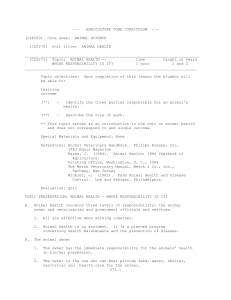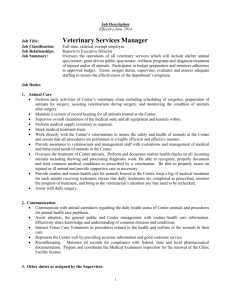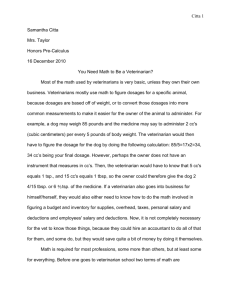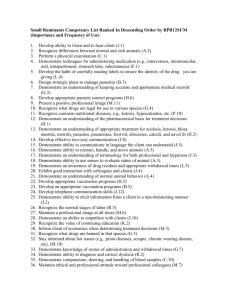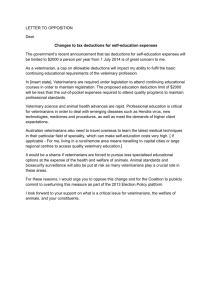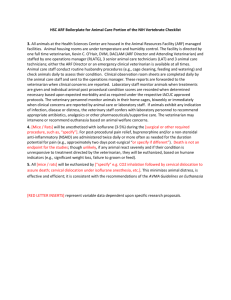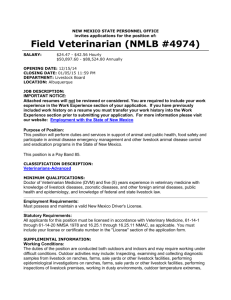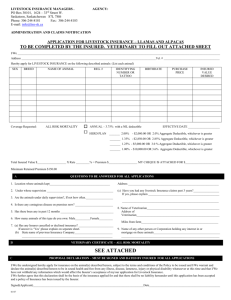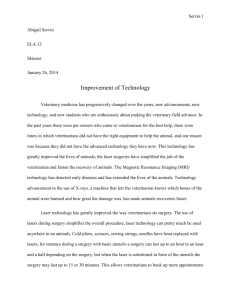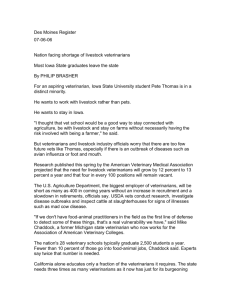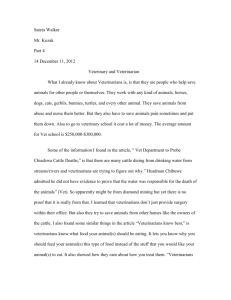File - Anyssa Frias
advertisement
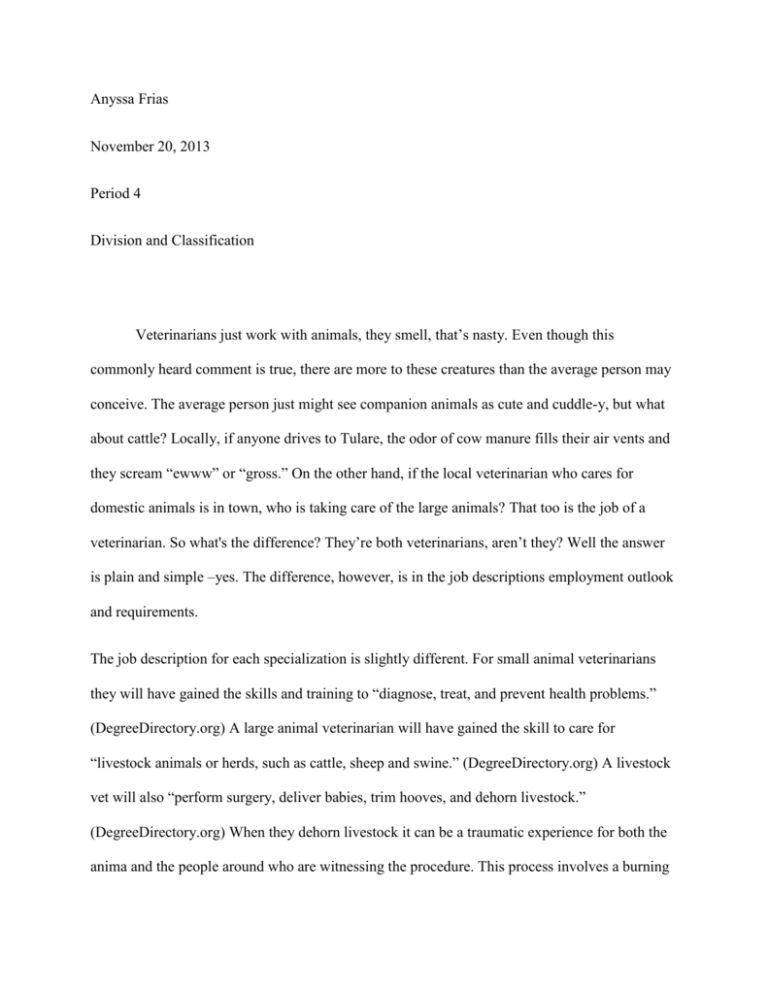
Anyssa Frias November 20, 2013 Period 4 Division and Classification Veterinarians just work with animals, they smell, that’s nasty. Even though this commonly heard comment is true, there are more to these creatures than the average person may conceive. The average person just might see companion animals as cute and cuddle-y, but what about cattle? Locally, if anyone drives to Tulare, the odor of cow manure fills their air vents and they scream “ewww” or “gross.” On the other hand, if the local veterinarian who cares for domestic animals is in town, who is taking care of the large animals? That too is the job of a veterinarian. So what's the difference? They’re both veterinarians, aren’t they? Well the answer is plain and simple –yes. The difference, however, is in the job descriptions employment outlook and requirements. The job description for each specialization is slightly different. For small animal veterinarians they will have gained the skills and training to “diagnose, treat, and prevent health problems.” (DegreeDirectory.org) A large animal veterinarian will have gained the skill to care for “livestock animals or herds, such as cattle, sheep and swine.” (DegreeDirectory.org) A livestock vet will also “perform surgery, deliver babies, trim hooves, and dehorn livestock.” (DegreeDirectory.org) When they dehorn livestock it can be a traumatic experience for both the anima and the people around who are witnessing the procedure. This process involves a burning hot iron on the horn cells of a baby lamb or kid, and so on, in order to kill those horn cells to keep the horns from going. Due to larger animals, the livestock veterinarian will spend their time traveling to “farms and ranches to treat patients.” (DegreeDirectory.org) So what can each vet expect in their employment? Well they can expect “much faster job growth than the average occupation.” This can be explained with the quick growth spurt of the “companion” animals. (DegreeDirectory.org) With growth of companion animals comes care on the companion animals. This is a direct factor, like x is to y; pet owners are most and “more likely to invest in pet insurance and veterinary care than in the past” because their “pets” meaning is seen more than just a pet but as a family member. (DegreeDirectory.org) As a large animal or livestock veterinarian they can look forward to “little competition” and “job opportunities in federal government” positions like for testing the soon to be “food” conditions; where they’re raised, how well their environment is, and any hazards. As far as requirements go, both types of veterinarians will need to complete pre-veterinary courses as an undergraduate. This includes courses such as “organic and inorganic chemistry, physics, biology, nutrition, zoology, microbiology and math.” (DegreeDirectory.org) All the classes that have to be taken are the ones to prepare students for the Veterinary College Admission Test (VCAT), the Graduate Record Examination (GRE), and the Medical College Admission Test (MCAT): each one depending on different requirement to attend the medical school. Once admitted to a medical school, and having been enrolled into a Veterinary Medicine Program the courses that will be taken are “anatomy, physiology, pathology, immunology, microbiology, pharmacology, nutrition, and ethics.” (DegreeDirectory.org) Medical school is a total of four years, and those classes would be taken the first two years, the final two years would be spent doing more hands on training with “clinical training in surgery, anesthesia, dermatology, radiology, critical care, and euthanasia.” (DegreeDirectory.org) So as explained, veterinarians can specialize and focus one fewer types of animals and can expect basically the same amount of education plus the internship. There needs to be areas of focus because the positions of the small animal vets is “expected to grow much faster than the average occupation,” so the large animals need to be taken care of and accounted for. Both vets will administer vaccinations, prescribe medications, dress wounds, perform surgery, order diagnostic test, perform euthanasia and counsel owners regarding general care, behavior nutrition or breeding as a part of their job. (DegreeDirectory.org) Each one, and area, vary slightly from one to another and others are just the same, but one things assured; one must have a desire to help, and aid those poor animals who really depend on us, humans.
